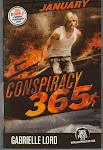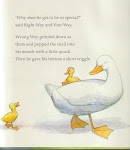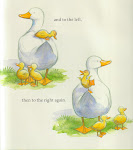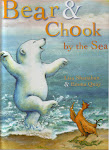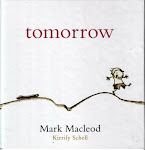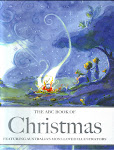Anne Ingram is another great and sad loss to those who love Australian children's books, and although her work has influenced generations of children here and around the world - children who are now parents and grandparents themselves - you won't hear much about her in the media. If some literary editors had to struggle with their superiors to get a picture or even a mention of Patricia Wrightson into their pages a few days ago, they've got practically no chance of a decent obituary for a book editor and publisher, however influential. Those are simply our community's values, folks.
Not that I want to hurry them up, but when one of our high profile cricketers or billionaire gamblers or - let's be generous and choose someone from another field in the arts - one of our Hollywood stars or shock jocks passes on, the headlines will say '___________ DEAD'. And everyone will know who we mean. Fill in the celebrity blank.
But someone whose talent was to understand for well over 40 years what children would enjoy reading and would learn from, someone who could spot from their first rough drafts the writers and illustrators with potential to become famous around the world, and someone who could steer countless collaborations through the production process and help run a publishing business? Unfortunately, their going is unlikely to be headline news, but the loss to the Australian publishing industry and to their family and friends is immense.
Anne Ingram was such a wise and energetic publisher. I'd use the cliche 'doyenne' and use her full name, Anne Bower Ingram, as she did formally, but they'd make her sound distant and posh, and despite the echo of a traditional Good Education in her vowels, she was too cheeky and too much fun for that!
When Brian Wildsmith's publishers took advantage of the new and less expensive four-colour printing technology in the UK 50 years ago and began to produce picture books with the kind of ebullient palette we take for granted today, they changed children's reading experiences forever. And it was Anne who saw the possibilities in this new technology for Australia. In 1974 she was the first to recognise that Australia had outstanding children's books it should sell to the world, so she formed a small delegation to the children's book fair in Bologna - the important annual marketplace where the rights to Australian children's books are now much sought after.
Anne launched and guided the careers of so many Australian writers and illustrators who are loved by readers all over the world: Pamela Allen, Ron Brooks, Bob Graham, Craig Smith, Deborah and Kilmeny Niland, Junko Morimoto, Lilith Norman, Nan Hunt, Rod Clement, Diana Kidd.
Patricia Wrightson changed the way non-Indigenous older readers saw Australia's first nations, but it's not often recognised that a series of startling picture books by Dick Roughsey and Percy Trezise, beginning with The Giant Devil-Dingo in 1973 opened the eyes of early childhood readers and their adult carers to the power of Indigenous storytelling, which had previously been diminished by the dry transcription of colonial anthropologists and dull black-and-white illustrations. Anne published these groundbreaking books, which embodied reconciliation, because they were the work of an Indigenous and non-Indigenous team.
And her collaboration with the Japanese-Australian artist Junko Morimoto was Australian multiculturalism at its best. I love all Junko's books, but My Hiroshima is special. Listen to the stunned and thoughtful silence when you've finished reading that book to children.
It's hard to pick from so many favourites on Anne Ingram's list - I mean, which of Pamela Allen's or Bob Graham's wonderful books are you going to mention? Anne and I often laughed about Belinda, and of course Crusher is Coming. But I think I'll mention a Bob Graham book that's often overlooked: The Wild. Just in that title alone, he knows how children hook onto the mysterious sound of an archaic adult phrase ('the olden days' is another one) and off go their imaginations. Then there's Whistle up the Chimney by Nan Hunt and Craig Smith. Rod Clement's brilliant Counting on Frank. Lilith Norman's haunting classic A Dream of Seas. The list goes on.
An academic friend of mine said to me yesterday how sad it was that her education students knew so few books from the rich tradition of Australian stories. Keating was right in his Creative Nation speech in 1994. The new technologies, however mindblowing, have resulted in a new wave of cultural imperialism on an unprecedented scale. And one of the casualties has been our own Australian story tradition. These books are where we've come from. What we are is where we've been. But in our rush to be edgy, we're losing our grip on that identity. Thank goodness Sarah Foster, the publisher at Walker Books Australia, has been smart enough and passionate enough to bring back into print Australian classics that other publishers have let go. Get behind her, folks! It's a risk - and she needs people to buy them before the accountants tell her that not enough people are interested.
I hope someone writes a serious account of the huge contribution Anne Ingram has made to the lives of Australian children. I can only give you a few tumbling words in honour of a friend. In constant pain from a disability, Anne never let her body stop her mind from leaping ahead. As a writer, when her marriage broke up, she and her friend Peggy O'Donnell decided that they would write a book about finance for women. At the time, practical support for divorced women wasn't easy to get and although, among her many skills, Peggy had been a bookkeeper, Anne said the idea of financial management and investment didn't come naturally to them. 'We simply went to bank managers and advisers, asked question after question, and we didn't move until they'd given us the answers we needed.' And out of that need they went on to publish several bestselling books for adults and children on managing your money.
Other books of practical advice, or histories, anthologies, picture book texts, written in collaboration with Peggy or alone are in libraries and bookshops everywhere. But the sense of adventure and fun these friends shared extended far beyond writing and publishing into every area of their lives. They loved art, the theatre, boating, gardening, riotous colour in everything, but always with impeccable taste. Well - 'always'. They did have a child's delight in nicknacks and on a whim might buy a set of kitchen cutlery with pictures embedded in the handles, or placemats shaped like tropical fish or a rainbow coloured eraser to stick in a friend's pocket after a visit as they closed the door. So good taste did sometimes give way to fun.
They were intrepid travellers and went everywhere - always grateful for the way their families helped in many practical ways to make it easy. I hope Anne has written some of her stories down. My favourite was always about the cruise to Alaska, where they were to get off the ship and kayak up the sound, taking in the forests, the glaciers, the deep dark water at close range. The crew looked at these two older women and in a kind, if patronising, voice warned them that the paddle would be a challenge and that if it got too much for them, they only had to yell for assistance.
The following day, as the passengers prepared to disembark and kayak up another waterway, the cruise director asked Anne and Peggy to lead the expedition - they had handled the first day's exploring so brilliantly. You could feel the exhilaration in the room whenever they told stories like this.
Going to Peggy's funeral last year was very difficult for me, although imagining her hang-gliding at Stanwell Tops in her 70s did help. And Anne somehow gave a really wonderful farewell speech. But she looked so small up there behind the lectern. She had begun to think about new books and new adventures, but I can't help feeling that for once she had encountered a challenge that was going to be tough to beat: the absence of a friend who was such a source of inspiration, physical support, plain commonsense and fun.
Not to hear those voices jumping down the phone again, saying, 'Mark, when are we going to see you? How about lunch next Thursday, or breakfast if you've got meetings?' Not to have Anne draw me aside to the lounge and pore over the proofs of a new book, and ask for the latest publishing gossip, while Peggy did the cooking. Not to be welcomed at the front door by Peggy with an arm hooked through mine and always the considerate words, 'How much time have we got?' How much?
That's the hardest part of all.


